To date, there is a huge number of different decorative crops that have been widespread in modern landscape design. Rhododendron or pink tree is particularly popular, as many gardeners are called.
This decorative plant simply amazes with its bright appearance and lush flowering. It is an opinion that this exotic shrub cannot be raised in the conditions of the climate of the Urals, but it is absolutely wrong. Today, a huge number of rather cold-resistant and frost-resistant species and varieties of rhododendron have been created, which, with proper care and compliance with all the landing rules, you can grow in the Urals.
In this article, we will consider the features of Rhododendron, as well as mention the types and varieties of this culture that can be grown in the territory of the Urals. And also tell me about the most important nuances of agrotechnics of growing Rhododendron in the Urals.
Features and description of rhododendrons
Rhododendrons are deciduous, evergreen or native shrubs, although there are sometimes trees. This culture relates to the family of heers. The natural habitat of these plants is considered predominantly northern hemisphere, namely the territory of China, Japan, Himalayav, USA and East Asia. In Russia, you can also meet several types of rhododendrons growing in nature and have excellent sustainability to our climate. It is on such types of this plant worth paying attention to the great desire to grow rhododendrons in the Urals.
The name of this culture into Russian is translated using two roots: "Rhodon", which is in translation denotes "Rose", and "Dendron" - "Tree". Simple words, Rhododendrons denote the "pink tree", which is very symbolic and not at all by chance. After all, the beauty of flowering plants is simply impossible to describe, the flowers of rhododendrons are comparable only with the beauty of roses. Especially in appearance, the flowers of some varieties of rhododendrons are very similar to the inflorescence of roses. It is such a bright appearance and fear some gardeners of the Urals, thinking that this beauty is simply impossible in the climatic conditions of the middle strip of Russia. But this is not the case, many types of this culture, with proper care, grow beautifully in the Ural Earth.
Description Rhododendrons:
- Rhododendrons are presented great variety. They are deciduous, evergreen and semi-evergreen shrubs and trees.
- Also, this type of plant can be attributed indoor azaleas, which bloom in time is very reminiscent of the blooming rhododendron.
- These plants may have upright stalks, and some form sharpening and creeping shrubs. Some species achieve the size of giant trees, but such representatives of Rhododendrons are unlikely to rise in the Urals. On this territory it is possible to grow relatively low plants. Approximately the height of rhododendrons can vary from 10 cm to 10 m.
- Garden Rhododendrons are predominantly low and represented by shrubs.
- The root culture system is superficial, which contributes to a rather painless transplant.
- Rhododendron leaves can be the most different shapes and sizes, from small to large, resembling ficus leaves.
- The leaves can also be annual, two-year and perennial.
- Depending on the variety, the leaves are egg-shaped and inversely, with a smooth edge and sawmills.
- To the stems of the leaves are attached with the help of cuffs or are sedentary.
- The main advantage of any variety of rhododendrons is flowers that have an absolutely diverse form. You can find the flowers of the funk-like, tubular, bell.
- Color coloring is also very diverse. Even by choosing some one cold-resistant variety. Suitable for growing in the Urals, you can choose the color shade you need.
- Some types and varieties of this plant during flowering exude a pleasant fragrance.
- The fruit of the plant is represented by a multiple box, in which small seeds are collected up to 2 mm in diameter.
- Rhododendrons are often called capricious plants that are quite difficult to grow. This is a culture that only requires more attentive care and relationship. As a result, you will delight you with lush flowering and bright appearance, even in the conditions of the climate of the Urals and the middle strip of Russia.
Popular species and varieties of rhododendrons in the territory of the Urals
To date, more than 800 different types of rhododendrons are known, which have different characteristics and level of winter hardiness, a higher threshold of which is so important when growing these plants in the Urals. Consider the most acceptable types and varieties of rhododendrons for more harsh climatic conditions. The most common varieties of rhododendrons in the Urals include the following: Rhododendron Dauri, Rhododendron Larbura, Rhododendron Shlippenbach.
Rhododendron Daurus for the Urals
- The most acceptable and cold-resistant view of Rhododendron, which feels great in the middle lane of Russia.
- The natural habitat of this plant is the territory of Siberia, Primorsky Krai, China and Korea.
- Rhododendron Daursky prefers to grow in coniferous forests by the second tier, groups and singly. You can also meet it on the rocks.
- The plant relates to average view and can reach a height of 3 m.
- Branches and shrub shoots are directed up, covered with gray bark.
- The leaves of this plant are rather small, only 2 cm long. The shape of the leaves oval oblong, leathery surface.
- In the summer, the foliage is green on top and brown on the bottom. Autumn leaves acquire a reddish tint.
- This kind of rhododendron is distinguished by the fact that part of the leaves remains on the branches for the winter.
- Blossom starts before the appearance of leaves on shoots and lasts about three weeks.
- Flowers of a bright pinkish-purple shade and have a funnel shape.
- Inflorescences are large, reach up to 4 cm in diameter.
- With proper care, even in the climate of the Urals climate, Rhododendron Dauri can bloom again in the autumn period.
Rhododendron Larbura for Urals
- Also quite suitable for cultivation in the Urals grade Rhododendron.
- The natural aril of the habitat Rhododendron Larbura is the territory of Altai and the subalpiic belt.
- Most often you can meet this plant in coniferous forests or in the undergrowth to such a forest.
- It is a half-green shrub, which can grow in height by 1.6 m.
- Branches in a shrub thin, dark color.
- All shoots are covered with foliage with leathery. In the form of the leaves of egg-shaped or oval, dark green, on top and bright shade from below. Rhododendron leaves winter on branches, then during thaws are revealed and pleased with their colors during the flowering of inflorescences, and then in the period of growth fall.
- Blossom starts in May and lasts an average month.
- Flowers of a bright purple pink shade.
Rhododendron Shlippenbach for Urals
- In nature, this type of rhododendron grows on the territory of Primorye, Korea, Japan, China.
- It grows this plant in the form of a small tree, which can reach height to 1.6 m.
- Pretty large deciduous plant.
- Mid-sized green leaves.
- Flowers rhododendron shlippenbach beautiful, large colors in the shape of a bell and with a gentle aroma.
- Blossom begins in May, flowers can be white or pink shade.
In addition to the above types of Rhododendron, others can be grown in the Urals:
- Rhododendron Kathevbinsky - blooms at the end of May purple-lilac flowers, the plant in height reaches 1.5 m.
- Rhododendron Golden - bloom comes in May; low grade up to 0.3 m in height; Flowers bright golden inflorescences.
- Rhododendron Japanese - strawberry average, reaches 1 m; Flowers in salmon-red inflorescences.
- Rhododendron Canadian - flowers with bright purple violet flowers; Shrub is low up to 80 cm in height.
Rhododendron breeding in the Urals: Common ways
Rhododendrons can multiply in vegetative and generative ways. To breed these exotic plants in the territory of the Urals, absolutely all types of breeding are suitable. The differences will consist only in possible more thorough care and shelter of the planting material. The choice of breeding method will also depend on the Rhododendron variety that you have chosen as a parent plant. Some plants are perfectly multiplied with stalling, for example Rhododendron Dauri. Others can no problem grow from seeds, for example, Rhododendron Shlippenbach. Consider all the ways of independent breeding of bright shrubs on their site.
Seed breeding Rhododendron in the Urals
- This method is quite complex and time consuming, it will require patience and attention to seedlings.
- First of all, it is necessary to purchase seeds of rhododendrons. It is better to acquire them in specialized stores, so you will be sure that you get high-quality planting material.
- Next prepare containers for sowing seeds.
- Rhododendrons require wet and nutritious soil, so for sowing seeds take peat and sand in the proportion of 3 K1.
- Understand the substrate with water and drink seeds.
- Sprinkle with clean river sand from above and cover the entire container with glass or film.
- Capacity must be put into a bright place to germinate seeds.
- In the future, during the month you need to avoid sowing daily, remove moisture from glass and moisturize the substrate.
- After about 1 month the first shoots will appear.
- With the appearance of several strong leaves from seedlings, they are transplanted into a cool greenhouse.
- The approximate distance between seedlings should be at least 2 cm.
- After a year, the strengthened plants can be planted on a specially prepared bed, and in the climate of the Urals, it is possible to do this in 2 years.
- Flowering you can see only 7-8 years.
Reproduction of grinding Rhododendron in the Urals
- This method is also very laborious and will require enough time before you see fixed plants.
- For breeding rhododendrons in this way, the obsessive shoots that need to be cut about 8-10 cm are approximately length.
- The optimal time for the workpiece of the planting material is spring when the plant has not yet entered the kidneys.
- Finished cuttings are cleaned from at the bottom and placed on a day into a solution of a special cornering agent, for example, corneser.
- Next, it is necessary to prepare containers with a nutrient substrate. Suitable exactly the same mixture, as for sowing seeds, i.e. Peat and sand in the ratio of 3 to 1.
- Shorten in the soil of the cutlets cover from above the cropped plastic bottle or other material. The main thing is that the planting material was a kind of dome.
- The rooting is very long and its time depends on the specific type of Rhododendron: leaf falls are rooted by about 1-1.5 months, and evergreen - 4-4.5 months.
- After rooting the cuttings, spacious containers are transplanted in more than other soil composition. Containers need to be filled with a mixture of peat and pine needles.
- In this form, the plants are under the next spring, while they need to be taken into a cool room with a temperature not higher than 12 degrees.
- In the spring, the seedlings are planted on a bed where they grow about about 2 years. Only after that young rhododendrons land at a permanent place.
Reproduction of rhododendron grooves in the Urals
- This method of reproduction is rather simple and even inexperienced gardener will cope with it.
- It is necessary to reproduce this way in the spring when the earth flashes and the last frosts will fall.
- On the maternal bush Rhododendron, choose the lowest young and flexible shoots and hurt them to the ground.
- Pre-make a small incision on the crust of each naught escape.
- Lock with drains at the surface of the earth with a stud.
- Join the middle part of the shoots, leaving only the top. After that, plenty of all the chains.
- For drags, prepare the soil mixture consisting of peat and garden land.
- You can separate the laid from the mother bush in the fall or next spring, but for the regions of the Urals, give preference to the spring transplant. Planted young plants in the fall may not have time to be rooted before the onset of winter.
Stages of preparation before landing Rhododendron in the Urals
To obtain a beautiful and magnificent blooming rhododendron shrub in the conditions of a not quite favorable climate of the Urals, it is necessary to carefully prepare even before landing. It is important to carefully treat the choice of frost-resistant and suitable for this climate of Rhododendron's variety, as well as find the most suitable place on its site.
Stage 1. Selection of rhododendron saplings
The choice of rhododendron varieties suitable for the middle strip of Russia will be the key to getting a beautiful and blooming shrub in the future. First of all, take the seedlings of this plant only in specialized stores or agrofirms that are professionally engaged in breeding various plants. In such places, you can get a competent consultation on the conditions of landing and growing Rhododendron, and also be able to buy an acclimatized seedlove to your region.
It is important to give preference to winter-hardy rhododendron. This is Rhododendron Dauri, Shlippenbach, Canadian, Japanese and others. It is also worth buying only with a closed root system, since the root system of the plant can dry.
Before purchasing carefully inspect the seedling. It should not be visible damage and signs of diseases and pests. The soil in the container should be clean and wet.
Stage 2. Choosing a place for landing Rhododendron
- An important condition for normal growth and bloom of rhododendrons is their landing in places similar to the natural conditions of growing culture in nature.
- For Rhododendrons, light, but protected from direct sunlight place. Ideally will be, if you put seedlings among the trees by the lower tier. So Rhododendrons will receive scattered sunlight, which will contribute to the full growth of the plant.
- The complete shadow is also unacceptable for this culture, because Rhododendrons can then stop blossoming at all.
- It is best to choose a plot for them from the north side of the house where the sun is present only the first half of the day.
- Perfectly Rhododendrons are adjacent to the trees, the main thing is that they have a non-surface root system. Otherwise they will not give each other to develop.
- Rhododendron shrubs can be planted near a water branch or pond, these plants love wet air. However, it should be remembered that the place should be slightly sublime so that water does not accumulate water.
- When choosing a place, consider the fact that these plants do not like areas blown by the winds and with the presence of drafts.
Stage 3. Choice and soil preparation for landing
Rhododendrons are very picky in terms of soil at the landing site. The substrate must necessarily be sour and with a good moisture tap. The soil looseness also contributes to the normal growth of the plant. If the soil acidity on the selected section is low, then before planting it is necessary to add riding peat or special preparations to increase the pH of the soil.
It is important to carefully switch the selected area by making the soil loose and light. In this case, add coniferous needles and peat, so you increase the acidity of the place and reduce the drying of the substrate. In no case can not add ash, lime, dolomite flour into the soil mixture for landing. All these substances reduce the acidity of the medium.
Technology planting Rhododendron in the Urals
- Rhododendron seedlings in open primer can be in spring and autumn periods. However, in the conditions of the climate of the middle strip of Russia and the territories of the Urals, it is better to give preference to the spring landing. So a young plant will have time to grasp the onset of cold.
- Next, it is necessary to prepare landing pits for your rhododendrons. To do this, on the selected area, dig the pits of the depth - 35-40 cm and 50-60 cm wide.
- After that, the pit needs to be filled with a special soil mixture, which should consist of 8 buckets of the rigorous peat, 4 driers of loam and pine needles.
- Slightly tumbling the substrate, make the wells to the size of the root seedlings.
- Saplings also need to prepare before landing. Acquired containers with plants must be pouring water to make them easier extraction.
- Place the drainage layer on the bottom of each well to prevent moisture stagnation at the roots of the plant. As a drainage, small stones, gravel or broken brick can be used.
- Gently remove the seedlings and place them in the landing wells.
- Carefully straighten the rootodron roots on the landing hole and pour seedlings soil mixture. At the same time, follow the root neck to be on the same level with soil or slightly higher.
- After planting, all plants are abundant, and the rolling circle is thoroughly murdered. This is necessary to protect the plant from drying out, as well as for minimal weed growth. As a mulch, you can use peat, pine bark, chew. Subsequently, it will save your plants from frosts that are inherent in the Urals.
Agrotechnical cultivation of rhododendrons in the territory of the Urals
The care of rhododendrons in the Urals is practically no different from the generally accepted rules. The only thing will have to more carefully cover the plant for the winter. And so any frost-resistant Rhododendron varieties will require regular watering, feeding and pest protection. As a result, thanks to its diligent work, you will get a beautiful and flowering plant.
Watering
Rhododendrons are moisture-loving plants, so they need to provide regular and abundant irrigation. Approximately each plant requires two irons per week. It is necessary to more abundantly to water rhododendrons at the time of active growth and laying of colors buds. The plant also loves not only soil moisture, but also atmospheric. For this, shrubs can be sprayed from the hose or spacing. It is important to use soft water taken from a pond or rain. Water from the crane contains calcium, which accumulates from the roots. Before watering into water, you can add oxalic acid.
Loosening and mulching
Rhododendrons have a superficial root system, which is very close to the soil surface. Therefore, it is not recommended to loose and pour the soil in a rigorous circle, since you can damage the roots of the plant. To prevent the growth of weeds and preservation of the soil, the rolling circle can be periodically melted. Sweep the dry peat, the bark of pine trees or chew.
Podchar
- The first feeding is held in the Springtime. In this case, it is necessary to use fertilizers containing nitrogen. Fertilizers for rhododendrons acquired in specialized stores are suitable. It is necessary to apply according to the instructions.
- The second dressing is carried out after flowering. You can also use superphosphate, ammonium or special fertilizers for rhododendrons.
- At the end of summer, the plant is better not to fertilize, as it can cause not the right growth of shoots.
- After 2-3 years, you can change the upper layer of the soil. Add some peat mixed with cow dung.
Fighting diseases and pests
Pests:
- Caterpillars and slugs. These pests often appear in the shade of plant foliage. It is best to remove them with your hands.
- Pliers and weevil. Most often attack Rhododendrons. To combat them, it is best to use diazonin, which needs to be treated not only the plant, but also the soil around it.
- TLL, shield, rhododendron flies. To combat such pests, it is necessary to use special drugs, such as carbofos.
Diseases:
- Rust or spotty. These diseases may appear on the plant due to improper regime of irrigation. Manifests itself with yellow spots on the leaves. To combat such diseases, it is best to use special preparations - fungicides.
- Rot. When this disease appears, damaged areas of the plant are carefully removed and the shrub is processed by fungicides, as well as the soil around. With more serious damage, the plant is completely removed.
Shelter for winter
Growing rhododendrons in the Urals requires careful and timely shelter. From this will depend, whether winter frost will survive this exotic handsome man. The shelter of rhododendrons for the winter in the Urals should be started at the time of the appearance of the first small frosts. First of all, it is necessary to cover the root system, which is covered with peat and nestbust, you can use the foliage. Then neatly bent the branches of the shrub to the ground and cover with their sweetheart. It is necessary to remove the shelter in approximately in April when completely passes the threat of frosts.
Photo of rhododendrons in the Urals
It is possible to more clearly see the features of rhododendrons and the options for their landing in the Urals can be on the photos proposed below.
Rhododendrons are bright and beautiful plants that many are still considered exotic for our latitudes. But in fact, with the proper and right approach, you will be able to raise these plants without any special problems in our area even in the regions of the Urals with a more severe climate.

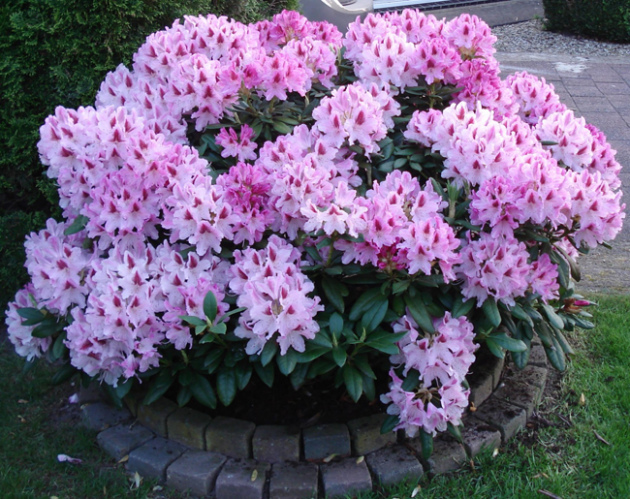
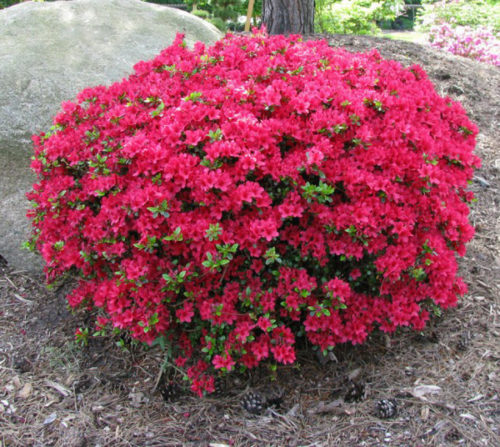

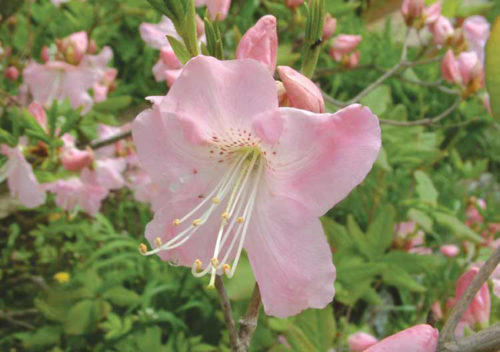
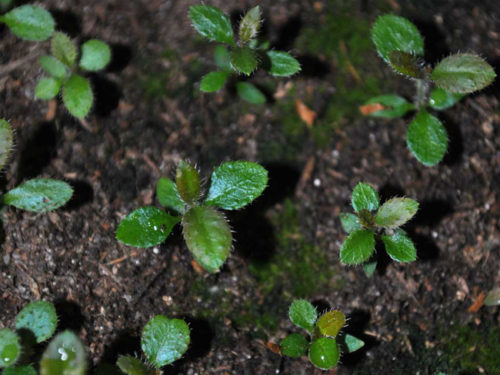
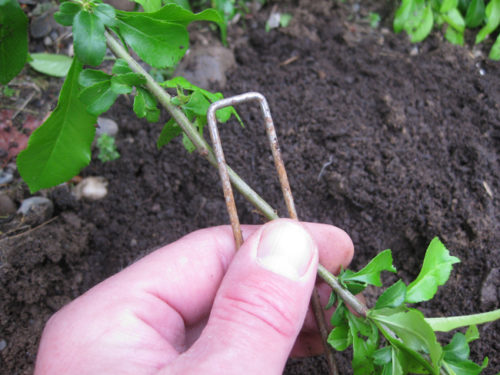
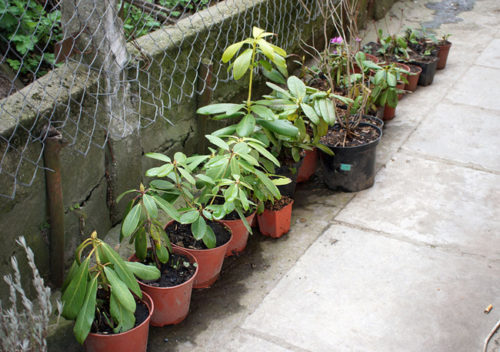
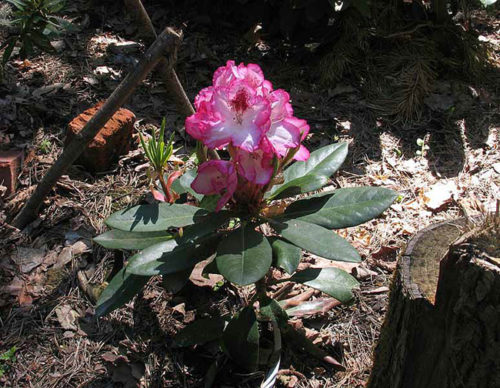
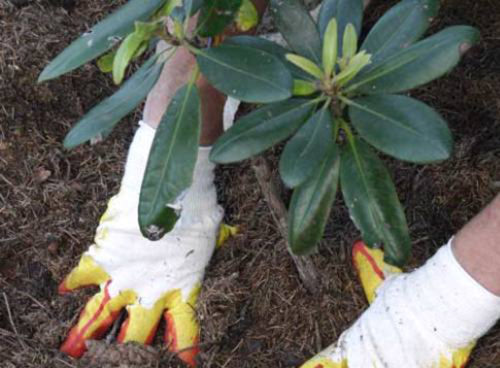
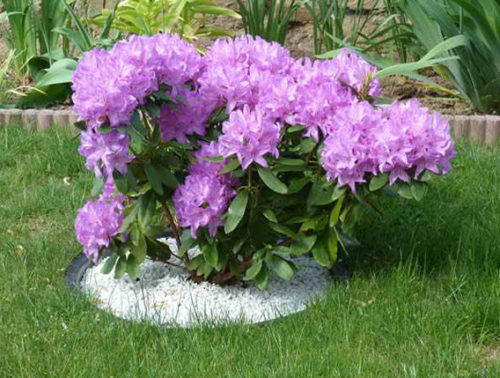
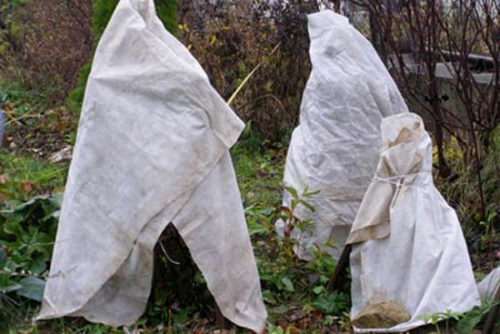
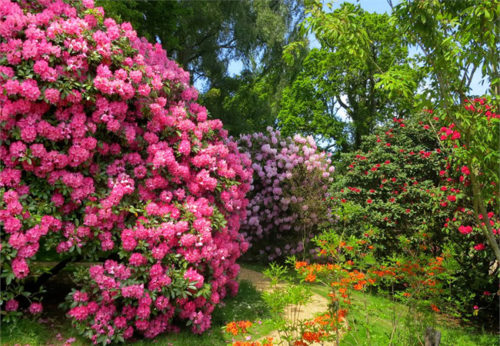
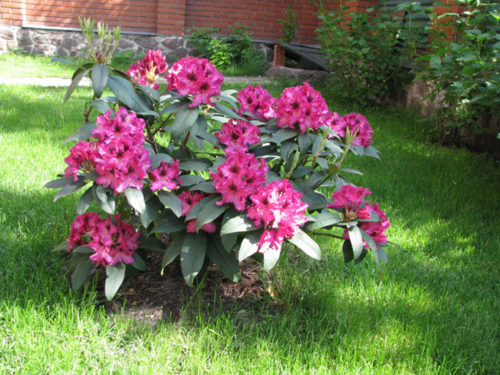
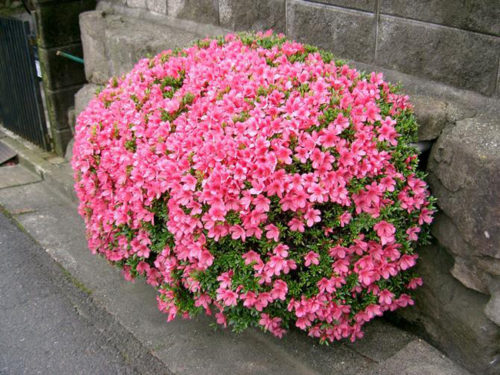
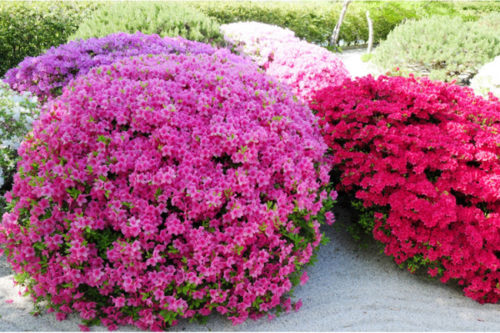












 Start a discussion ...
Start a discussion ...